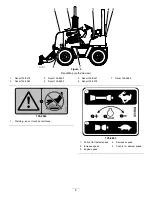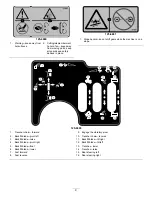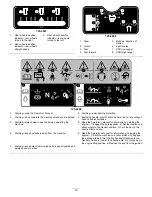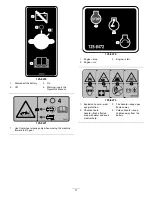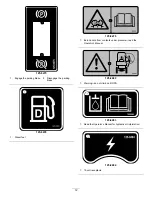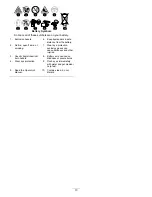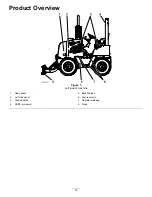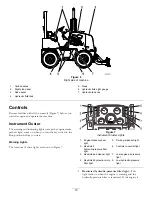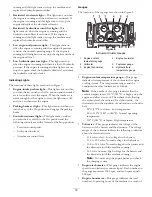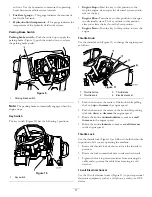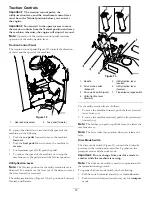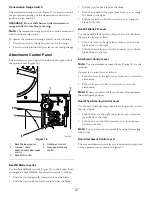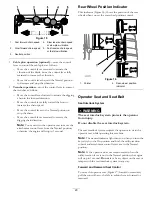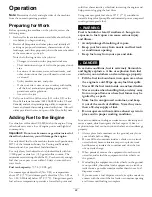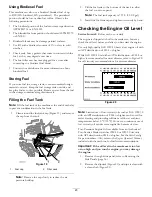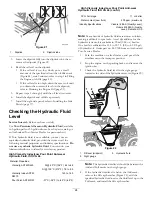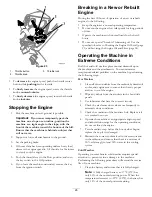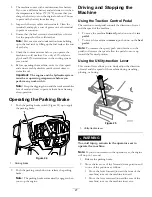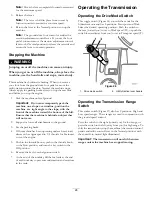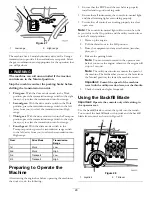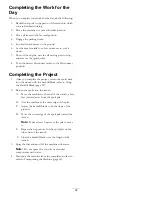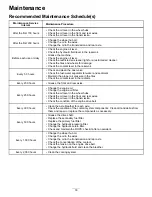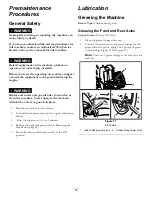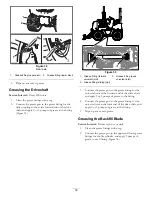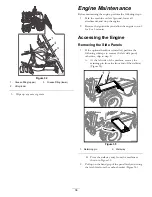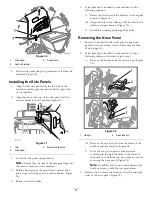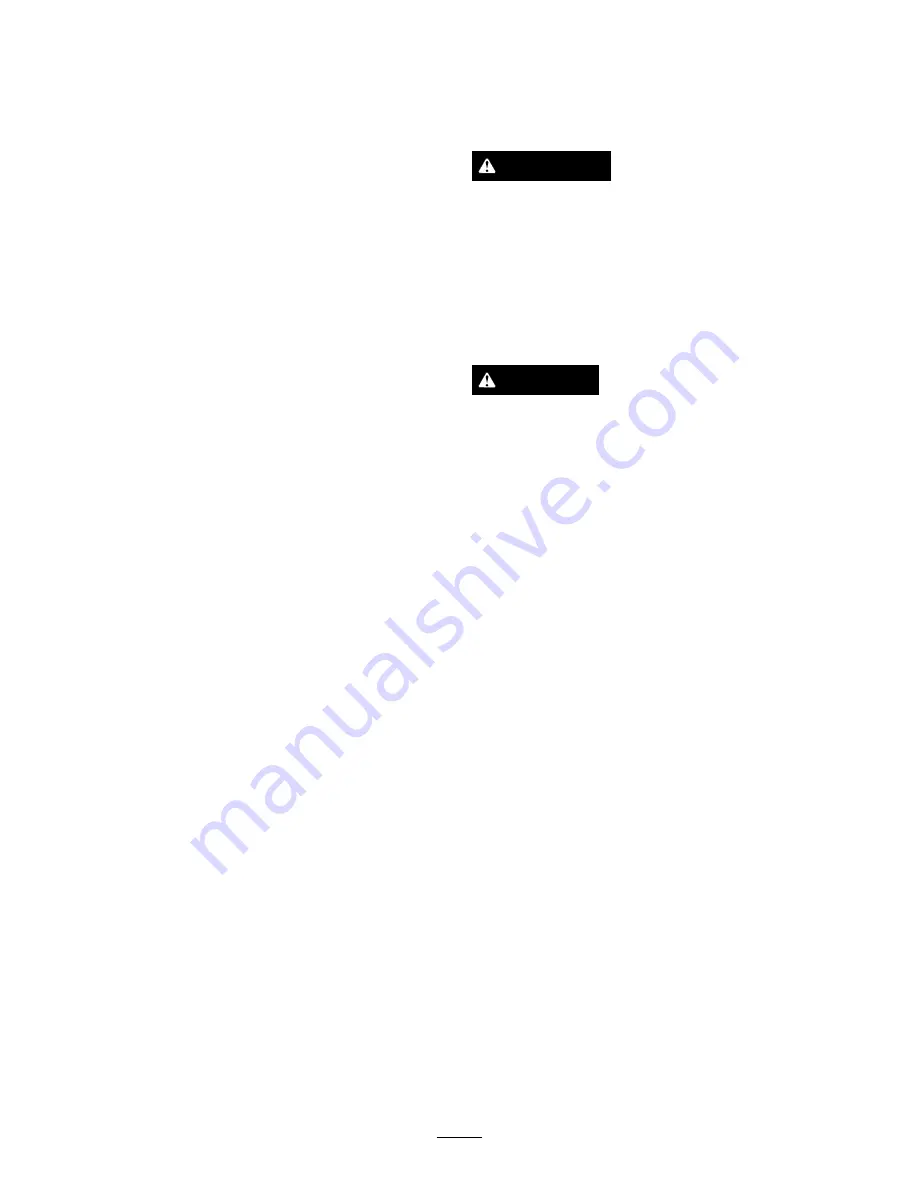
Operation
Note:
Determine the left and right sides of the machine
from the normal operating position.
Preparing for Work
Before operating the machine on the job site, review the
following items:
•
Gather all relevant information available about the job
site before you begin working.
•
Review all blueprints and other plans, and identify all
existing or proposed structures, characteristics of the
landscape, and other proposed jobs in the area scheduled
at the same time as your job.
Note the following items at the job site:
–
Changes in elevation in the proposed work area
–
The condition and type of soil in the proposed work
area
–
Locations of structures, water, railroad tracks, and
other obstructions that you will need to work near
or around
–
Utility markers, meters, and poles
–
If the work site is near or on a roadway with traffic,
call the local authorities regarding proper safety
procedures and regulations.
–
Access to the site
•
Call your local One-Call service (811 in the US) or the
One-Call referral number (888-258-0808 in the US and
Canada) and ask the participating utility companies to
locate and mark their underground utility lines. Also call
utility providers that are not part of the One-Call system.
Adding Fuel to the Engine
Use ultra-low sulfur diesel (ULSD) fuel in the engine. Using
other fuels can cause a loss of engine power and high fuel
consumption.
Important:
Do not use kerosene or gasoline instead of
diesel fuel; otherwise, you will damage the engine.
Use only diesel fuel for the machine that meets Specification
D975 of the American Society for Testing and Materials
International. See your diesel fuel distributor.
Use only clean, fresh diesel fuel or biodiesel fuels with low
(<500 ppm) or ultra low (<15 ppm) sulfur content. The
minimum cetane rating should be 40. Purchase only enough
fuel that you expect to use within 30 days to ensure that it
stays fresh.
Fuel tank capacity:
75.7 L (20 US gal)
Use summer-grade diesel fuel (No. 2-D) at temperatures
above 20°F (-7°C) and winter-grade diesel fuel (No. 1-D or
No. 1-D/2-D blend) below 20°F (-7°C). Using winter-grade
fuel at lower temperatures provides a lower flash point and
cold flow characteristics, which aid in starting the engine and
help prevent clogging the fuel filter.
Using summer-grade fuel above 20° F (-7°C) contributes
toward a longer fuel pump life and increased power compared
to using winter-grade fuel.
WARNING
Fuel is harmful or fatal if swallowed. Long-term
exposure to fuel vapors can cause serious injury
and illness.
•
Avoid prolonged breathing of vapors.
•
Keep your face away from nozzle and fuel tank
or conditioner opening.
•
Keep fuel away from your eyes and skin.
DANGER
In certain conditions, fuel is extremely flammable
and highly explosive. A fire or explosion from fuel
can burn you and others and can damage property.
•
Fill the fuel tank outdoors in an open area when
the engine is cold. Wipe up any fuel that spills.
•
Never fill the fuel tank inside an enclosed trailer.
•
Never smoke when handling fuel, and stay away
from an open flame or where fuel fumes may be
ignited by a spark.
•
Store fuel in an approved container, and keep
it out of the reach of children. Never buy more
than a 30-day supply of fuel.
•
Do not operate without entire exhaust system in
place and in proper working condition.
In certain conditions, fueling can release static electricity and
cause a spark, which can ignite the fuel vapors. A fire or
explosion from fuel can burn you and others and can damage
property.
•
Always place fuel containers on the ground, away from
your vehicle before filling.
•
Do not fill fuel containers inside a vehicle or on a truck
or trailer bed, because interior carpets or plastic truck
bed liners may insulate the container and slow the loss
of any static charge.
•
When practical, remove the equipment from the truck
or trailer, and refuel the equipment with its wheels on
the ground.
•
If refuelling the equipment with its wheels on the ground
is not possible, then refuel such equipment on a truck or
trailer from a portable container rather than from a fuel
dispenser nozzle.
•
If you must use a fuel dispenser nozzle, keep the nozzle in
contact with the rim of the fuel tank or container opening
at all times until fueling is complete.
22
Summary of Contents for RT600
Page 71: ...Notes 71...

